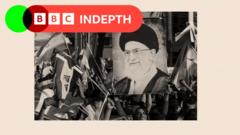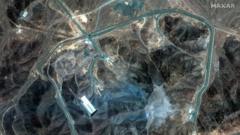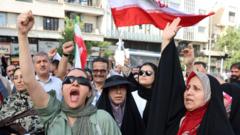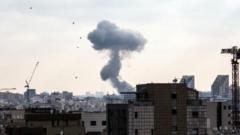The recent US military operation aimed at Iran's nuclear program showcased advanced tactical maneuvers, deception strategies, and the significant use of precision weaponry. While hailed as a victory, the long-term impact on Iran's capabilities remains uncertain.
Behind the Scenes of Operation Midnight Hammer: US Strikes on Iran's Nuclear Facilities

Behind the Scenes of Operation Midnight Hammer: US Strikes on Iran's Nuclear Facilities
A detailed analysis of the US bombing mission targeting Iran's nuclear sites, revealing tactical approaches and strategic implications.
As tensions escalate in the Gulf region, the United States has reported a significant military operation—termed 'Operation Midnight Hammer'—aimed at dismantling Iran's nuclear infrastructure. This high-stakes mission involved sophisticated tactics, including the use of decoy flights and stealth bombers, leading to questions regarding both its execution and its implications for future US-Iranian relations.
According to reports from US military officials, the operation commenced just after midnight local time when Secretary of Defense Pete Hegseth, alongside President Donald Trump and other key officials, observed the launch of B-2 stealth bombers from an airbase in Missouri. Initially, the deployment of aircraft was cloaked under the guise of a distraction, diverting attention to a separate Pacific operation. General Dan Caine, the Chairman of the Joint Chiefs of Staff, highlighted the unprecedented secrecy and strategic depth of the operation, noting that the mission encompassed over 18 hours of flight, multiple mid-air refuels, and a coordinated assault on Iran's most fortified nuclear sites.
The aircraft's primary targets included the Fordo and Natanz facilities, strategic components of Iran's nuclear program buried deep underground. Utilizing "bunker buster" bombs capable of penetrating substantial concrete depths, the operation marked the first real combat deployment of such weaponry, generating debate over its potential effectiveness in altering the trajectory of Iran's nuclear ambitions.
US officials have declared the operation a decisive victory, claiming significant destruction of Iran's capabilities. However, Iranian officials have asserted that the damage was less than reported, minimizing the scale of the assault while confirming the strikes. The conflicting narratives highlight the complexities of information warfare and the challenge of verifying military claims in such a high-conflict region.
In the wake of these strikes, the ramifications for both US foreign policy and Iran's nuclear program remain uncertain. Experts speculate whether this show of military force will significantly impact Iran's ambitions or provoke further escalation. As satellite imagery continues to be analyzed, the long-term effectiveness of such a military campaign will be scrutinized, questioning whether Operation Midnight Hammer will indeed mark a turning point in the already fraught US-Iran relationship.





















